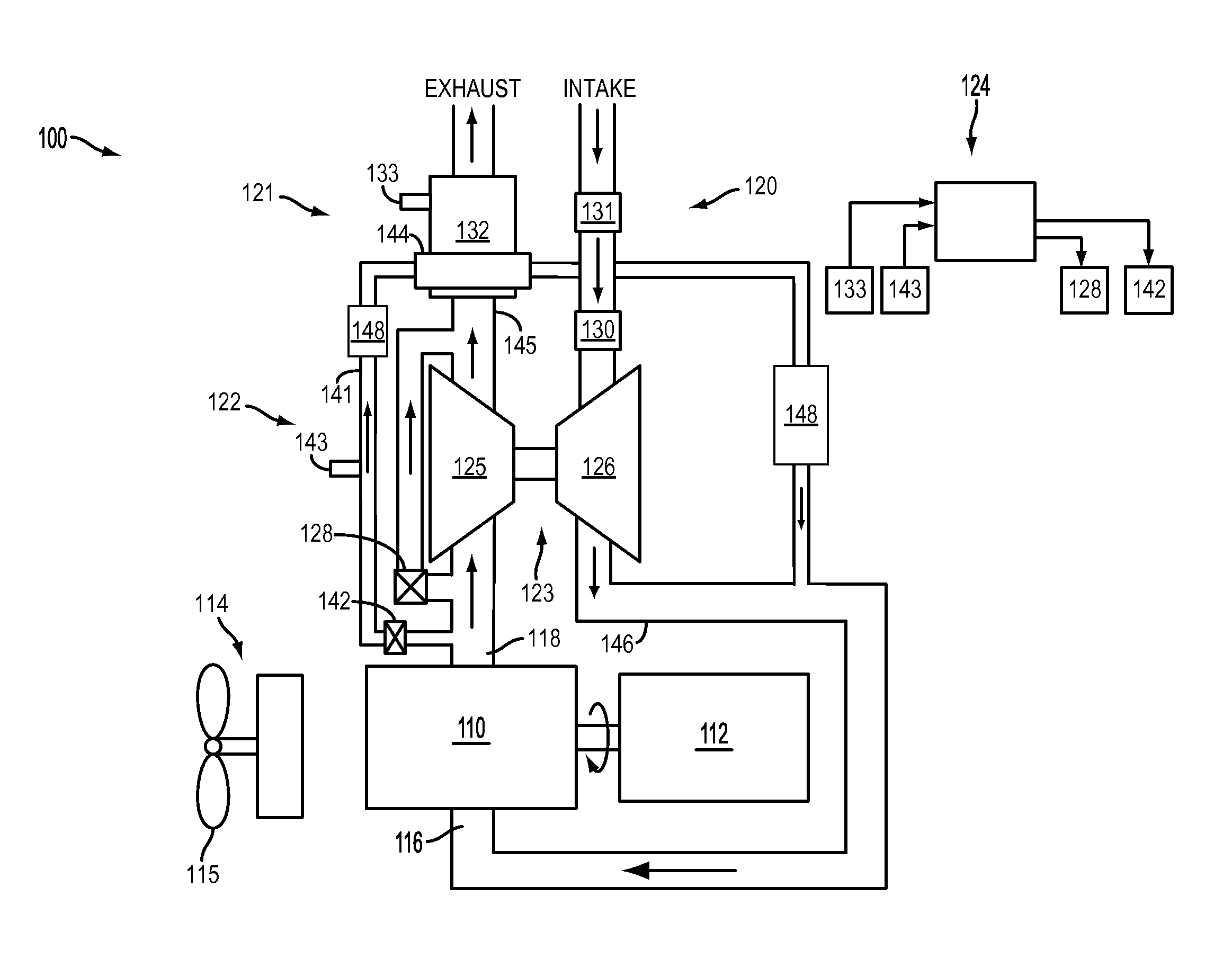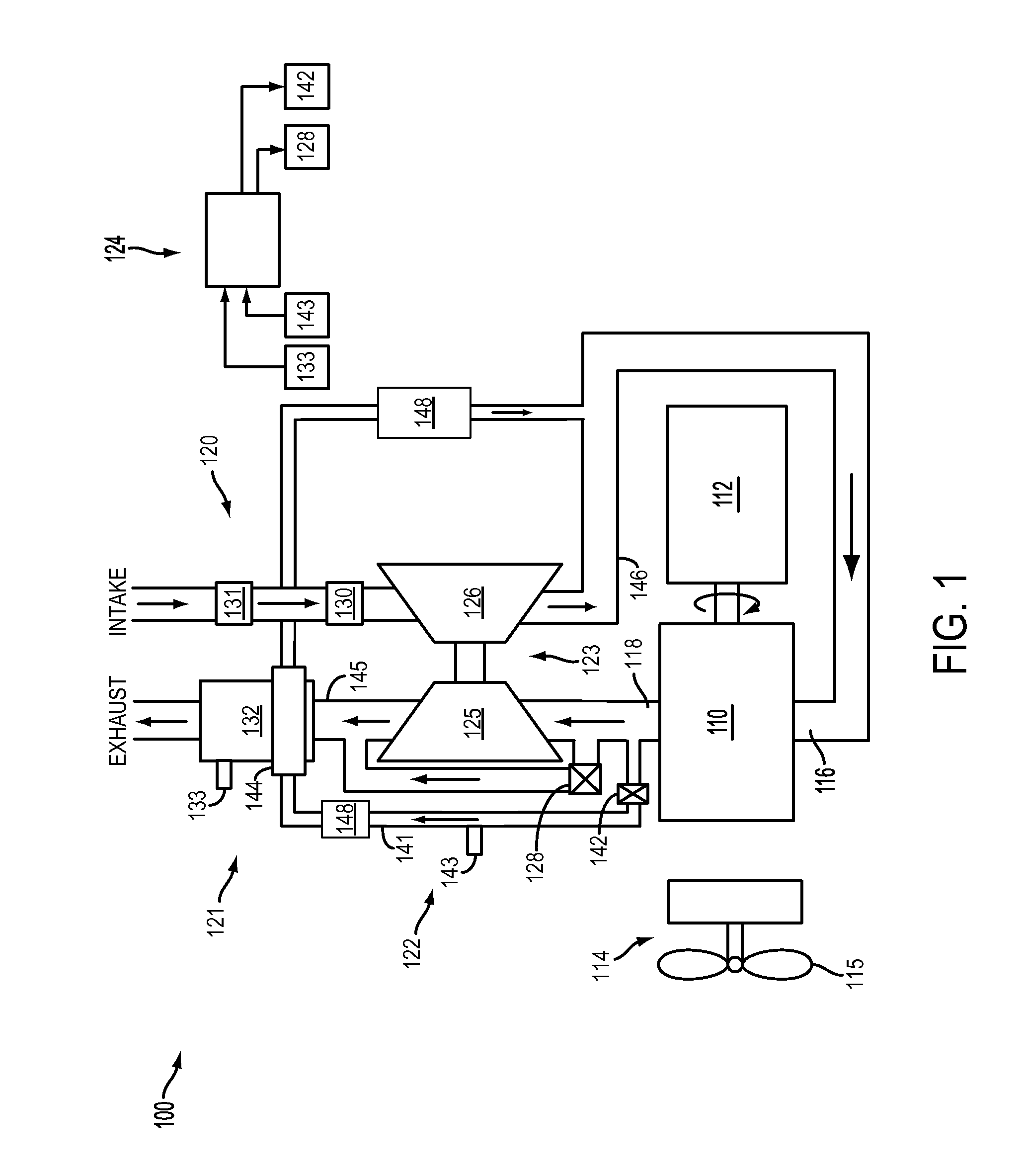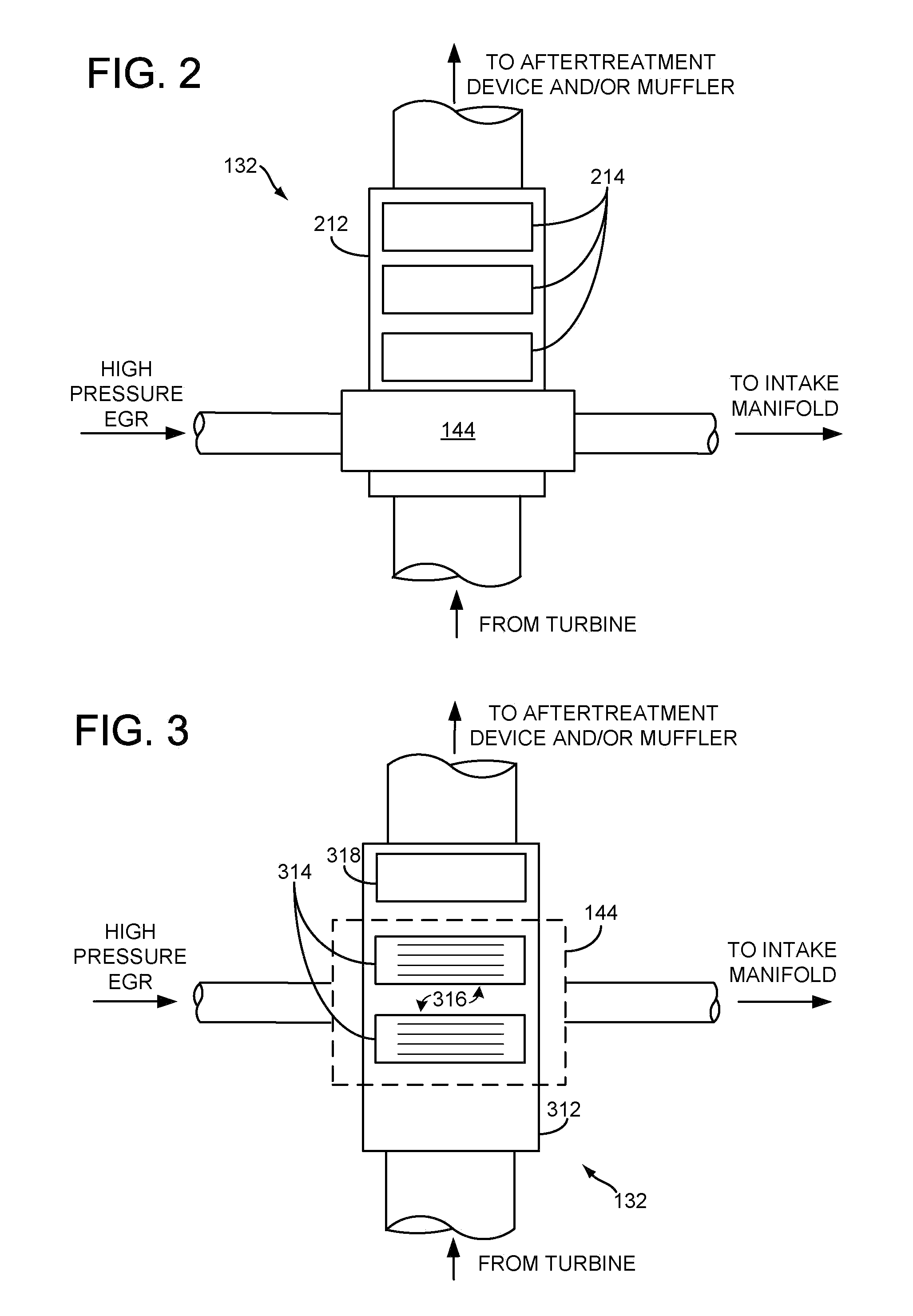System and method for locomotive exhaust gas recirculation cooling and catalyst heating
a technology of catalyst heating and exhaust gas recirculation, which is applied in the direction of machines/engines, mechanical equipment, non-fuel substance addition to fuel, etc., can solve the problems of high egr temperatures that may require significantly increased engine cooling system size and performance criteria, and require significant egr cooling. , to achieve the effect of reducing the required heat rejection of the engine coolant system, reducing the cooling requirements of the egr, and reducing the required cooling requirements
- Summary
- Abstract
- Description
- Claims
- Application Information
AI Technical Summary
Benefits of technology
Problems solved by technology
Method used
Image
Examples
first embodiment
[0027]Referring now to FIG. 2, it shows an exhaust configuration with an air-to-air heat exchanger. In this configuration, heat exchanger 144 facilitates heat transfer from high pressure EGR to the emission control device 132 coupled to the exhaust downstream of the turbocharger turbine, thereby allowing the emission control device to operate above a threshold light-off temperature over a greater range of engine operating conditions.
[0028]In particular, FIG. 2 shows emission control device 132 coupled downstream of turbine 125. The emission control device includes a housing, or can, 212 enclosing bricks 214. Bricks 214 are configured to carry a catalyst washcoat on a support. The heat exchanger is coupled in the emission control device upstream of the bricks. The heat exchanger passively transfers heat from the high pressure EGR to exhaust gasses entering the emission control device at a position upstream of the bricks. In this way, heat can be transferred directly from the EGR to t...
second embodiment
[0030]FIG. 3 shows an example configuration of the heat exchanger 144 and the emission control device 132. As shown, the emission control device includes a can 312 enclosing bricks 314. In this embodiment, the heat exchanger is coupled directly to a portion of the emission control device, and may be integrated into the emission control device. The heat exchanger may be configured to direct EGR flow over fins 316 coupled to the bricks and / or the can. Additional bricks may be coupled downstream of the heat exchanger, such as brick 318. As such, EGR heat is transferred to the emission control device.
[0031]FIGS. 4A-4E show various views of the third embodiment of an example configuration of heat exchanger 144 and emission control device 132. In the third embodiment, the heat exchanger is integrated into the emission control device allowing for a compact and efficient design. Specifically, in this embodiment, EGR flow is directed directly over and / or around the exterior of the catalyst b...
PUM
 Login to View More
Login to View More Abstract
Description
Claims
Application Information
 Login to View More
Login to View More - R&D
- Intellectual Property
- Life Sciences
- Materials
- Tech Scout
- Unparalleled Data Quality
- Higher Quality Content
- 60% Fewer Hallucinations
Browse by: Latest US Patents, China's latest patents, Technical Efficacy Thesaurus, Application Domain, Technology Topic, Popular Technical Reports.
© 2025 PatSnap. All rights reserved.Legal|Privacy policy|Modern Slavery Act Transparency Statement|Sitemap|About US| Contact US: help@patsnap.com



